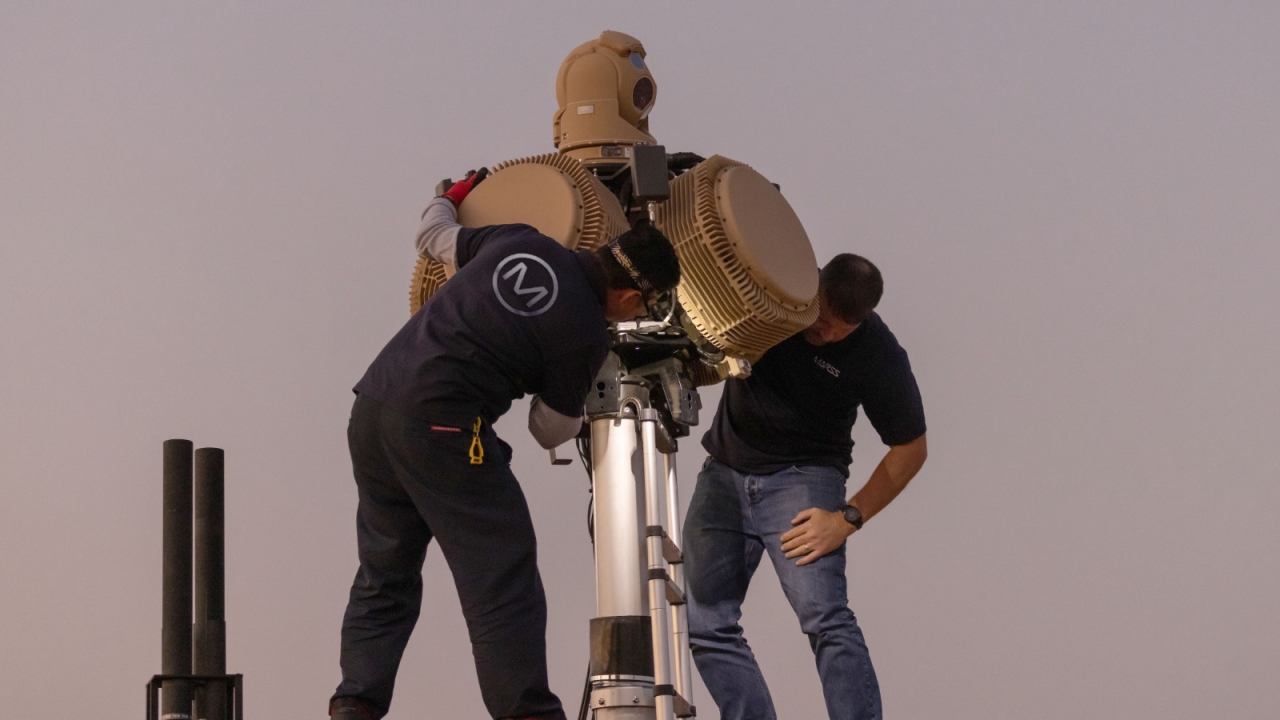Oman joins Jordan in operating Robinson helicopters

The R44 is a single-engined four-seat helicopter developed from the original two-seat R22, sharing much the same configuration, and with a similar semi-rigid two-bladed main rotor, two-bladed tail rotor and skid landing gear.
First flown in 1990, the basic R44 was developed to produce the R44 Raven, which introduced hydraulically assisted controls and adjustable pedals, and this was introduced in January 2000.
In July 2002, Robinson introduced the Raven II, which featured a more powerful, fuel-injected Lycoming IO-540-AE1A5 flat-six piston engine and wider main rotor blades, allowing a higher gross weight and improved altitude performance.
Though widely used in the commercial world, the Robinson R44 has had relatively little success in winning military orders, with a single example sold to Bolivia, three to the Dominican Republic’s Army, and four each to Estonia and Lebanon.
The Royal Jordanian Air Force (RJAF) selected the R44 Raven II to replace the fleet of 12 Hughes 500D helicopters used by No 5 Squadron, part of the King Hussein Air College at Mafraq, for primary rotary-wing pilot training. The Hughes 500s have been in service since 1981.
The decision to select the R44 came after a four-member RJAF evaluation team visited the Robinson Helicopter Company in March. While the team, led by Brigadier General Walid Jaradat, were reportedly impressed by the R44’s low operating and maintenance costs, Colonel Imad Ghwein revealed that it was positive feedback about the R44 from “a neighbouring country’s air force” that convinced the RJAF. The only Robinson operator in the region is Lebanon.
The Lebanese Army took delivery of its first two Robinson R44 Raven II helicopters in January 2005, and then received two more in December. These were assigned to the pilot training role, and were based at Rayak Air Force Base in Bekaa Valley. General Nouhad Zebian, the Lebanese Air Force Commander, later said: “The use of Robinson helicopters has been very cost-effective and allowed the students to become experienced pilots before moving on to flying larger military aircraft. We hope to expand our Robinson fleet with even more helicopters in the future.”
The Lebanese found that training in the Robinsons was a useful substitute for instruction in large and powerful military helicopters, which had always proved to be extremely costly with heavy consumption of fuel, and maintenance man-hours. They were also happy with the R44’s hot and high performance.
This was enough for the Jordanians, who promptly ordered an initial batch of eight R44s.
To prepare for the arrival of the R44 Raven II, 10 RJAF pilots attended Robinson’s safety course and 12 RJAF mechanics received instruction on the type at the company’s maintenance school.
The first four Jordanian R44s were scheduled for delivery before the end of 2014 with the second batch of four helicopters due to follow in early 2015.
The Jordanian R44s will be equipped with glass cockpits featuring Garmin and Aspen avionics, and will use Bendix King’s new military KTR909 UHF transceiver. No provision has been made for armament.
No 5 Squadron at Mafraq also incorporates a number of Aerospatiale AS350B3 Squirrels, but it is not known whether these will remain in service following the delivery of the Robinsons.
The RJAF operates a number of armed MD530FF helicopters with No 28 Squadron, part of the Prince Hashim Bin Abdullah II Aviation Brigade at King Abdullah II Air Base. These are due to be replaced by 18 Boeing AH-6i Little Bird helicopters.
Jordnian pilots after testing the Robinson R44
Stay up to date
Subscribe to the free Times Aerospace newsletter and receive the latest content every week. We'll never share your email address.

